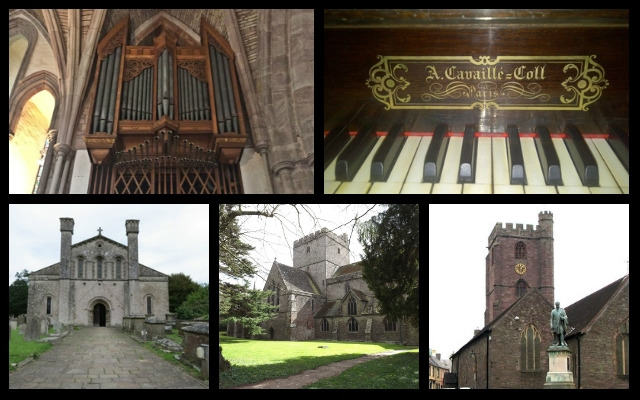As described in part two of our welsh organ adventure we had started the day at St Peter’s Church in Pentre. This was followed by a detour to St George’s Cwm Parc where the installed Viscount Organ had some external speakers added.
By midday we were back in the car and heading towards Brecon for a visit to the Cathedral but playing the organ there was in doubt as the building was taken over by the fire brigade for training. The Beacons are a place of substantial beauty but our trip was made in pouring rain and we were denied any view much beyond 50 yards in any direction as heavy mists hung stubbornly about.
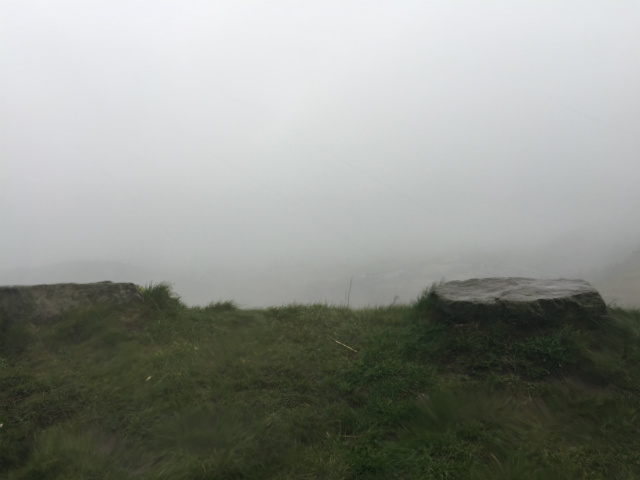
Unscheduled stop six – St Mary’s Church
So we took the opportunity to visit St Mary’s Church in the town where some years before we had installed a 3 manual Viscount Organ. I can not possibly visit all the church installations we carry out as these now get close to one a week. So it was a welcome chance to be able to see this, one of some of the larger installations we are asked to undertake.
St Mary’s sits very central in the town square and is clearly a bustling centre of the community as by 1 pm when we arrived the inside was near full of people taking their lunch from the small café facilities set up inside. Clearly no opportunity to play the organ here either but nevertheless it was good to see the work we had done.
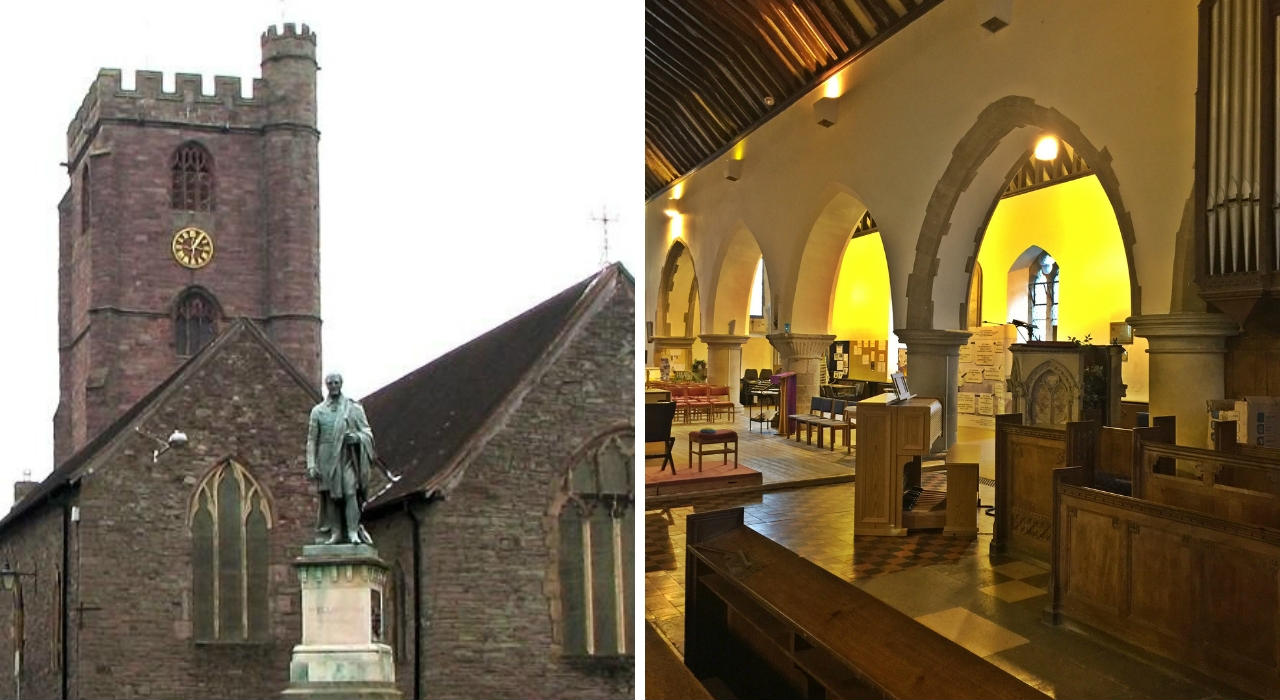
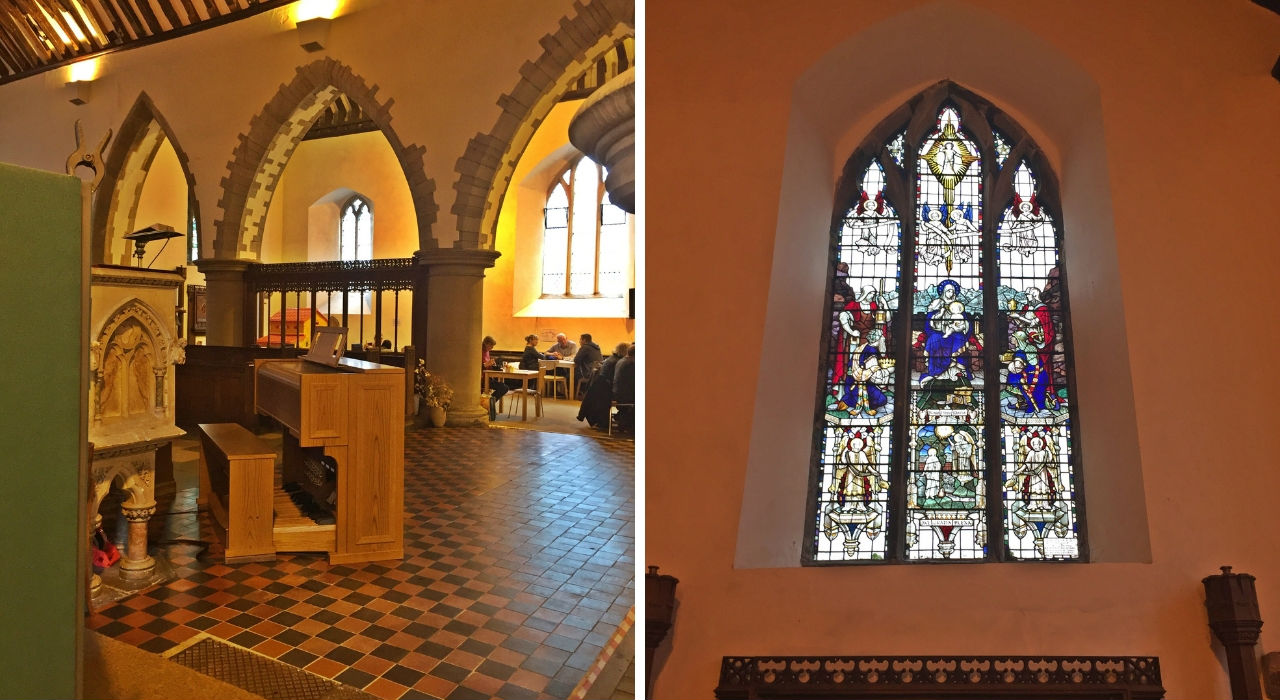
The pipe organ remains in place and is probably still playable although I expect it will always have been a little smaller than this large space could exploit. The nave has been cleared to allow the space to have a multi-functional use. Our console sits directly in the nave with musician facing west. The speakers are all placed inside the pipe case so apart from console there is no other visual clue that the instrument is now digital.
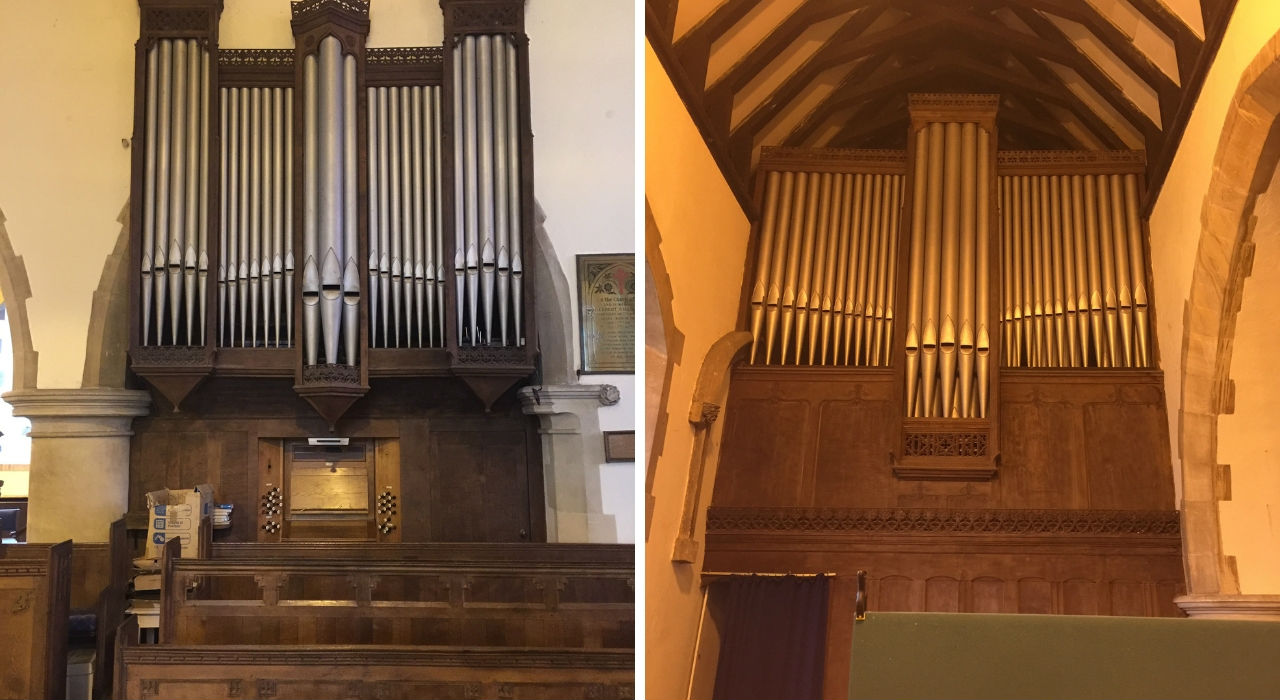
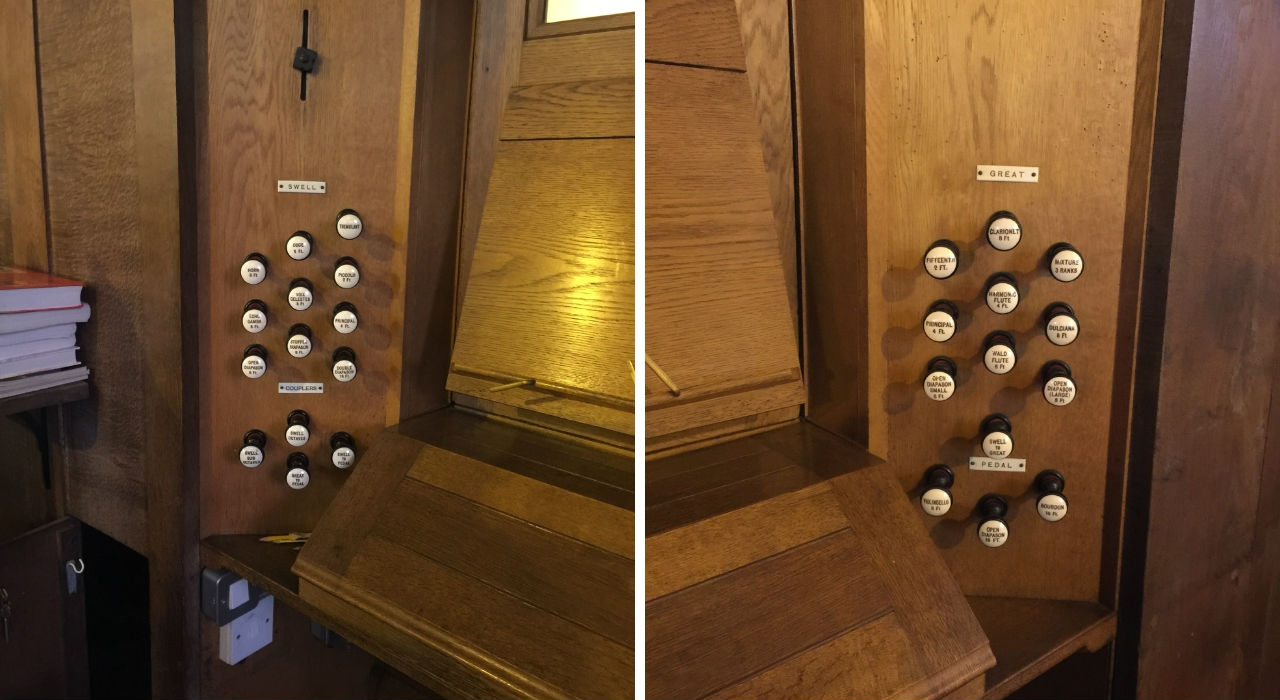
The church also has a rather charming chamber organ that would once have been in a house and happily the NPOR entry confirms this. Sadly, no date is provided but judging from the style of the case I doubt it can be much later than 1800 and clearly a very expensive addition for its first owner to the household inventory.
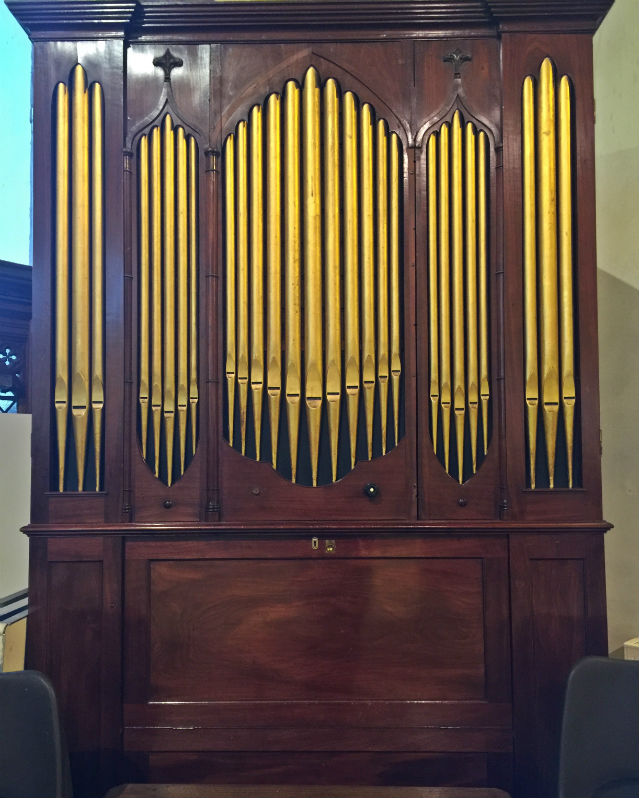
Brecon Cathedral our seventh stop on the tour
So after a brief look round we carried onto the Brecon Cathedral. Another first time visit for me and the fire brigade were indeed busy abseiling down from the bell chamber above the nave crossing.
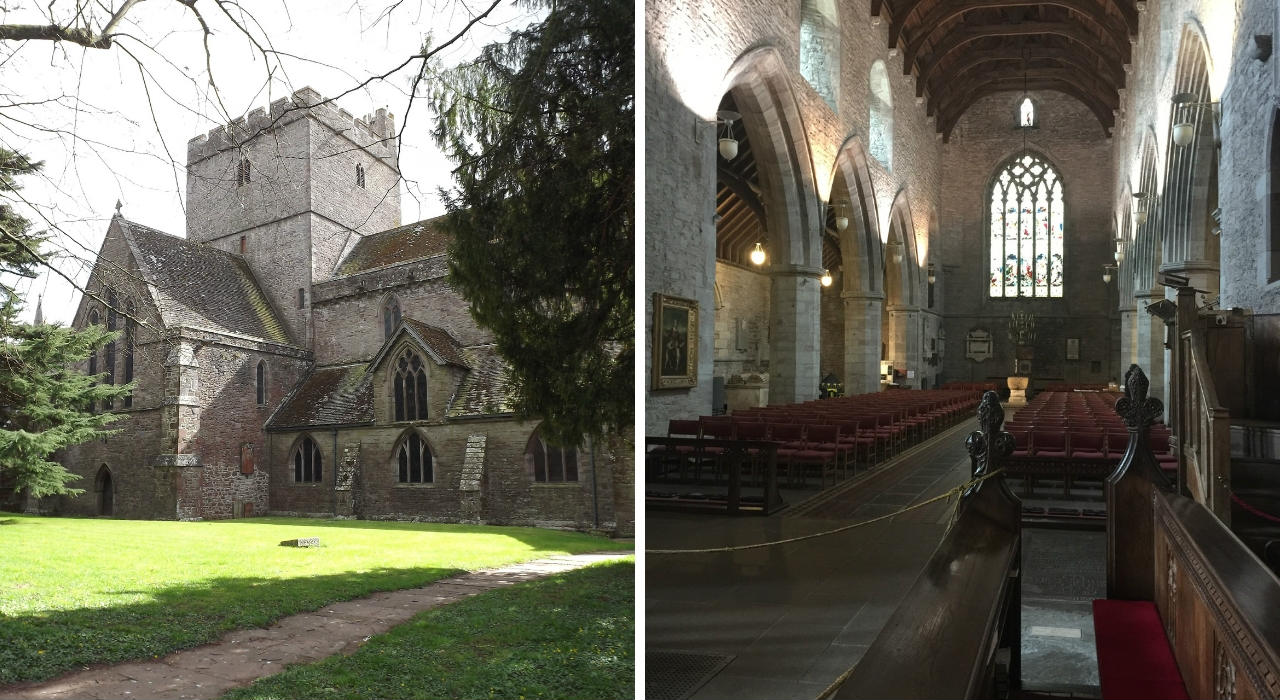
It seems this was training in case a bell ringer was taken ill or broke a bone rendering return down the stairs to ground level apparently difficult or impossible. In these health and safety conscious times I wonder just how long use of the bells will last if this is considered the only safe and practical way back to earth for those taken ill in the ringing chamber!
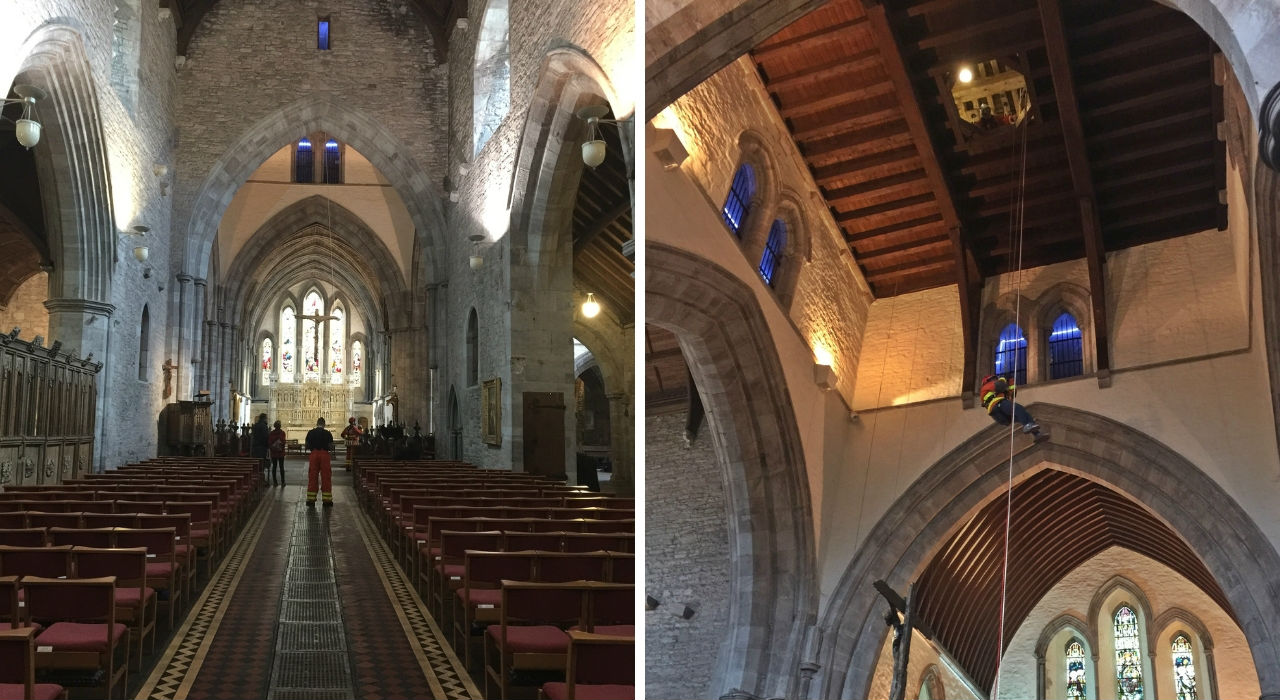
And so to the discovery of another chamber organ in the north aisle chapel. This one by Bevington with rudimentary pedals and about a 100 years or so later than the instrument in St Mary’s.
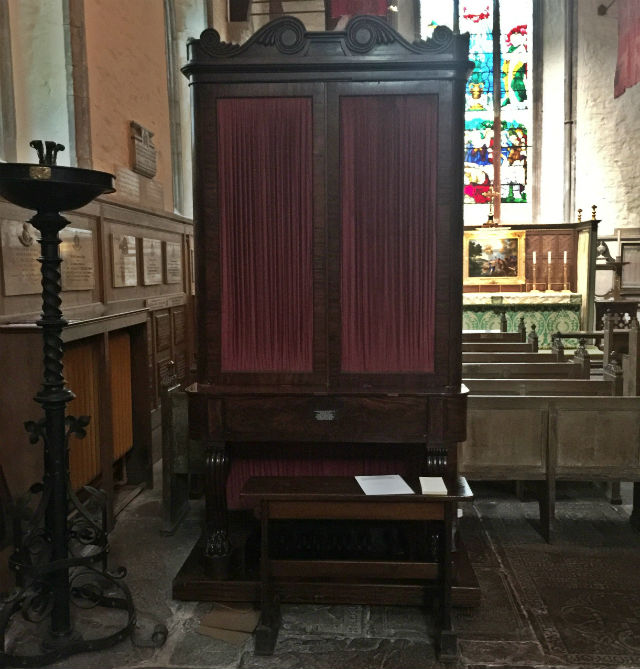
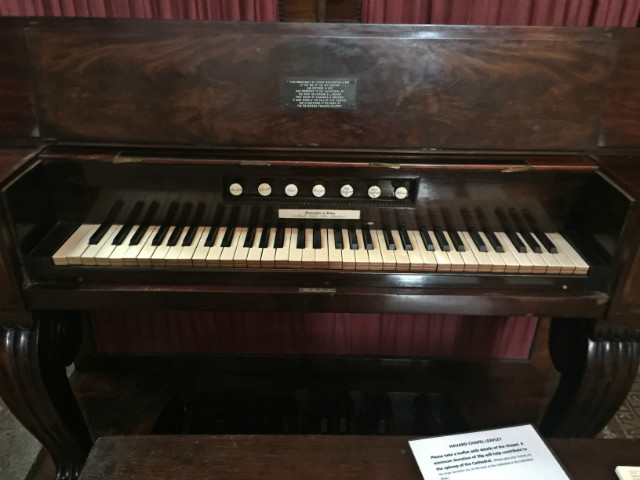
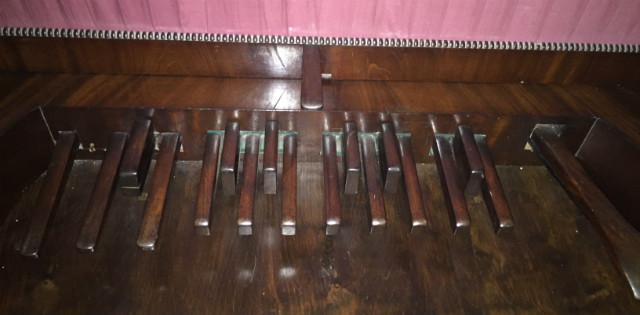
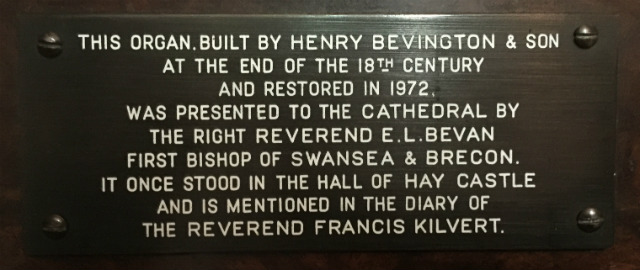
This side chapel contains many memorials to members of Welsh Regiments including the South Wales Borderers. I spent some time there to see if I would find any mention of the highly evocative dramatisation of that regiments part in the Zulu wars in Natal and of course the Battle of Rorke’s Drift in particular. The film celebrating that battle during which I believe 11 VC’S were won by both officers and men seems to have been on our TV screens every Christmas since it was made in 1964. I seldom miss the chance to see it again.
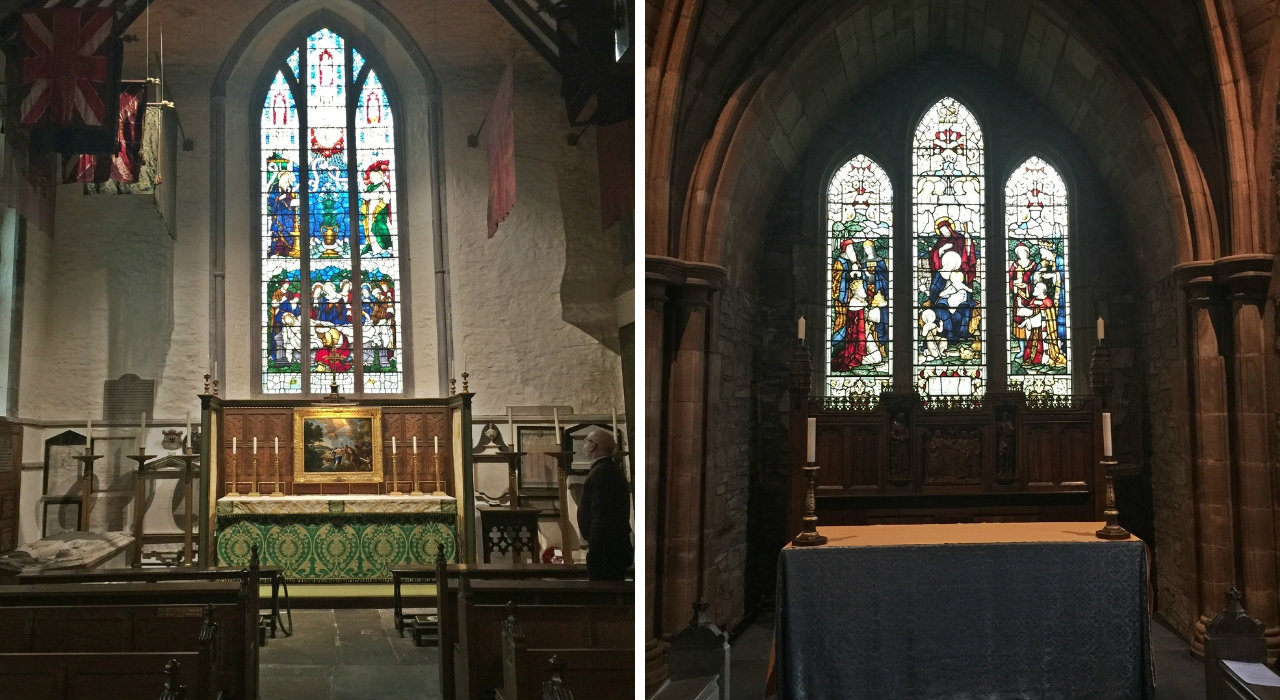
What is so compelling? Is it the story of extraordinary bravery on both sides? The Victory against impossible odds? Or the performance of Ivor Emanuel leading the singing of Men of Harlech ahead of the final encounter. That part of the film can be found on this link
Whatever the answer it’s a moving film that stands the test of time and of course has a particular appeal to me as a Welshman, filled as it is with a significant Welsh cast and narrated by the great Richard Burton. So I was interested to find this memorial tablet that records the Rorke’s Drift battle.
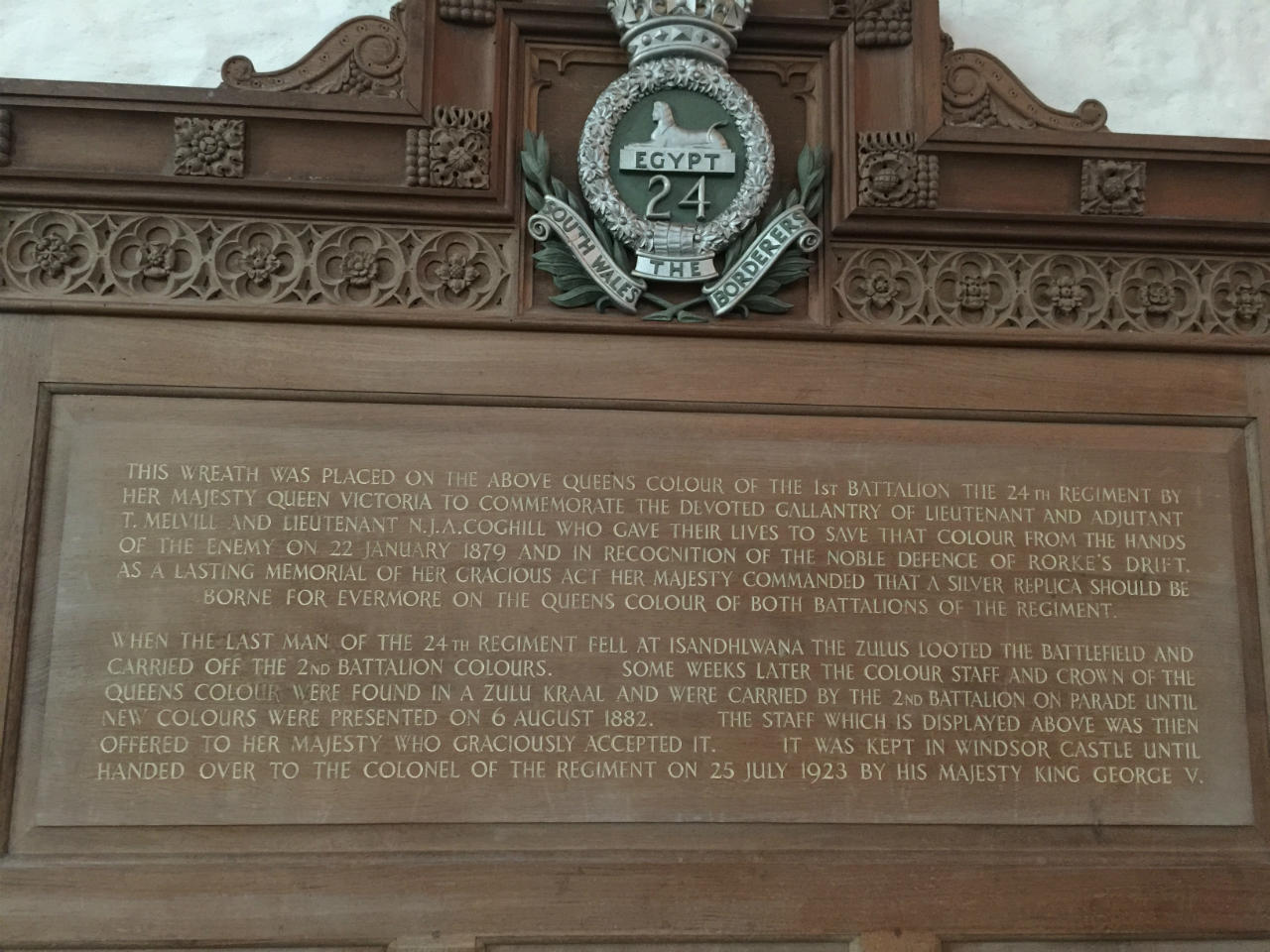
The Organ at Brecon Cathedral
The Hill at Brecon sits high in the crossing but speaking into the choir through what looks to be a very small pipe case for a 3 manual instrument of 38 speaking stops. Below the facade pipes you see a grill behind which now sit the ‘positive’ pipework. Originally though this was where the console was positioned in my favourite location, high above the action and a little remote! Look closely and you can also see an ‘En Chamade’ reed just below the facade pipes.
The console is on the north side of the nave floor. With the ‘rescue training’ still well under way in the nave there was no prospect of playing at Brecon so after a short adjournment for tea in the Cathedral Café we returned to the car for the final leg of this trip to a rather rare and special instrument at Margam Abbey.
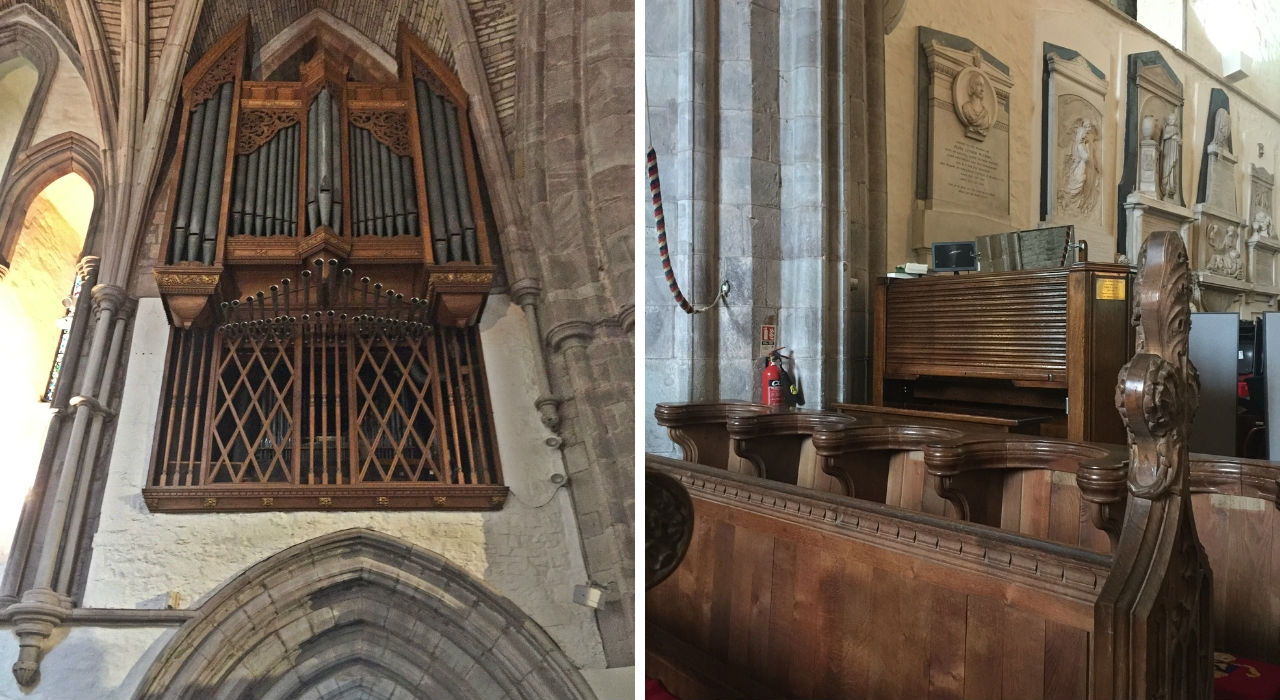
Our final stop – The Abbey of Margam
The Abbey of Margam, Grade I listed, is dedicated to St Mary the Virgin and dates from the second half of the twelfth century. The Norman Abbey is believed to have been built on or near the site of an important Celtic monastic house.
The building of monasteries such as Margam was on a scale hitherto unseen in Wales. For some forty years, skilled craftsmen toiled from dawn to dusk constructing church, cloister and the usual domestic offices. Shortly after completion of the late Norman buildings and with a desire to keep abreast of contemporary architectural trends the abbey’s entire east end was rebuilt in the Early English style. A great centre of learning, the abbey swiftly rose to a position of importance in the social, cultural and religious life of South Wales.
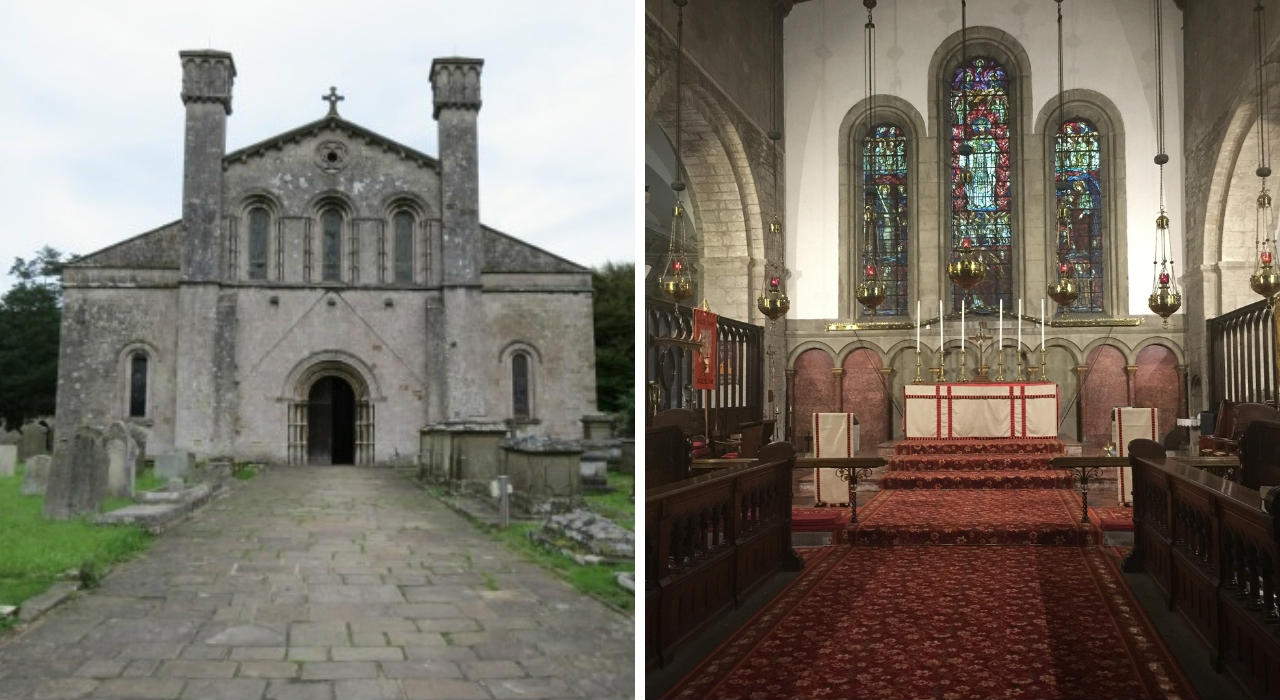
Although once the richest monastic house in Wales, Margam Abbey was closed by the Crown Visitors of Henry VIII in August 1536. The last Abbot, Lewis Thomas and the remaining monks were ejected and possession was taken on behalf of the King by Sir Rice Mansel, courtier and landowner, of Oxwich and Penrice, Gower. Some magnificent tombs of the Mansel family remain in the Abbey and have been recently subject to major restoration.
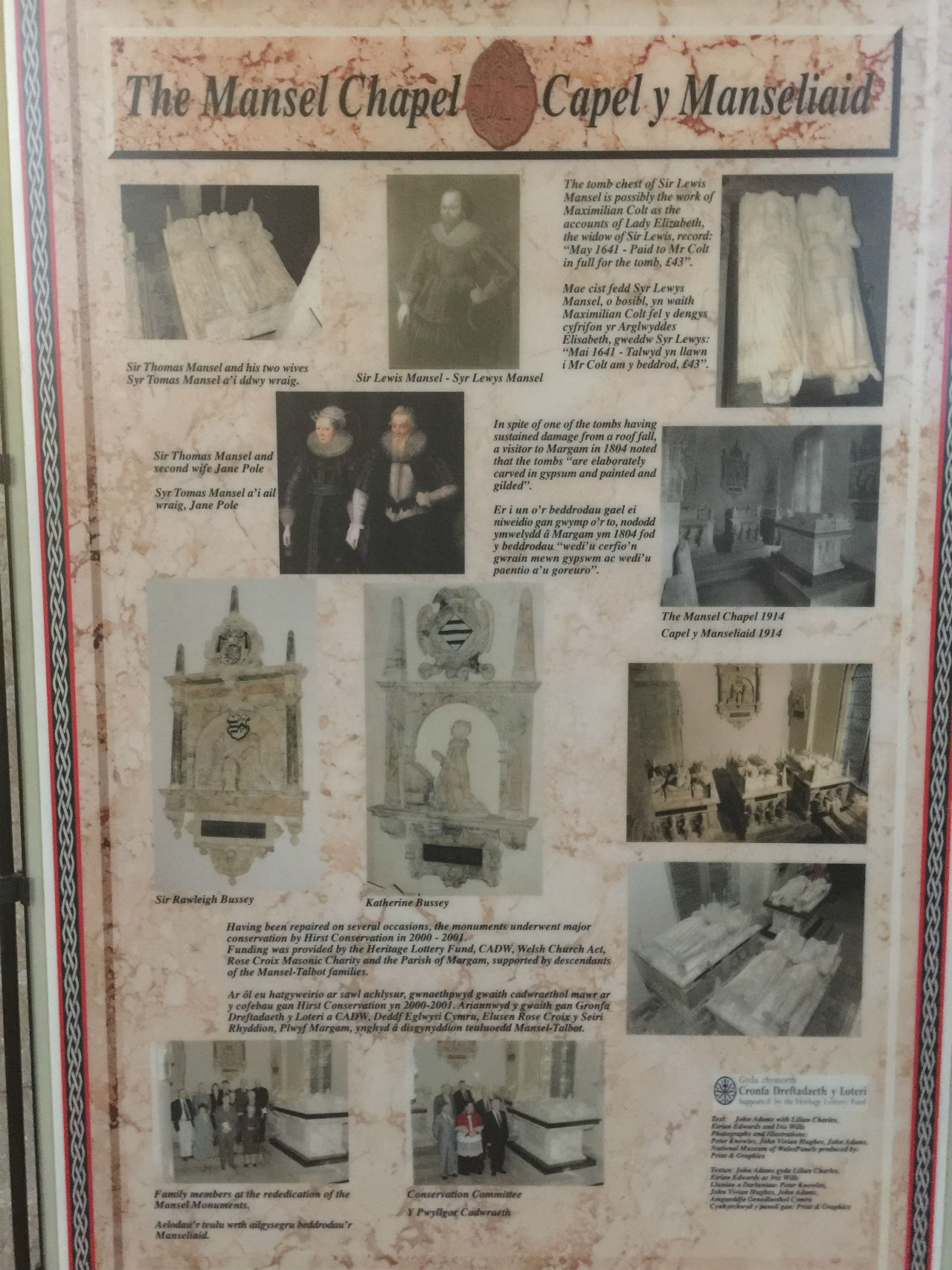
Much of the church furnishings are the result of a Victorian restoration under the patronage of Theodore Rice Talbot of Margam Castle. Talbot, a cousin of William Fox Talbot pioneer of photography, commissioned Edward Burne-Jones to design 3 windows for the west wall, which were made by the William Morris Company. This restoration is in the Anglo Catholic style of the late Victorian era and we again see a sanctuary with the 7 lamps ahead of the altar.

The Pipe Organ at The Abbey of Margam
The organ at Margam Abbey is one of the rare examples of work by Augustus Gern who came to the UK from France when he was foreman to Cavaille-Coll who were installing instruments here. He never returned staying to work in the United Kingdom on his own account.
It is assumed that Gern obtained a redundant organ by Hill which forms the basis of this instrument which sits in a north side alcove with the player sitting back to the pipework as is the case in many instruments by Cavaille-Coll. The console sits on what I can only describe as a cubicle on the nave floor with doors to left and right giving access to the small enclosure.
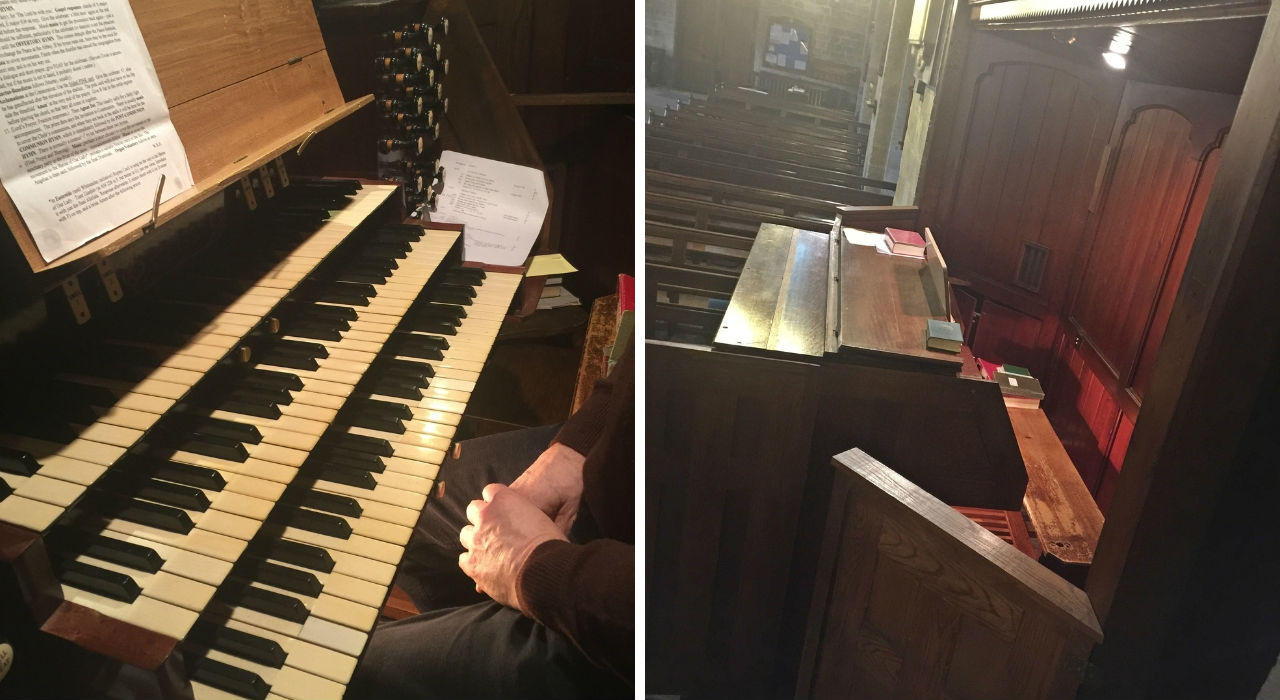
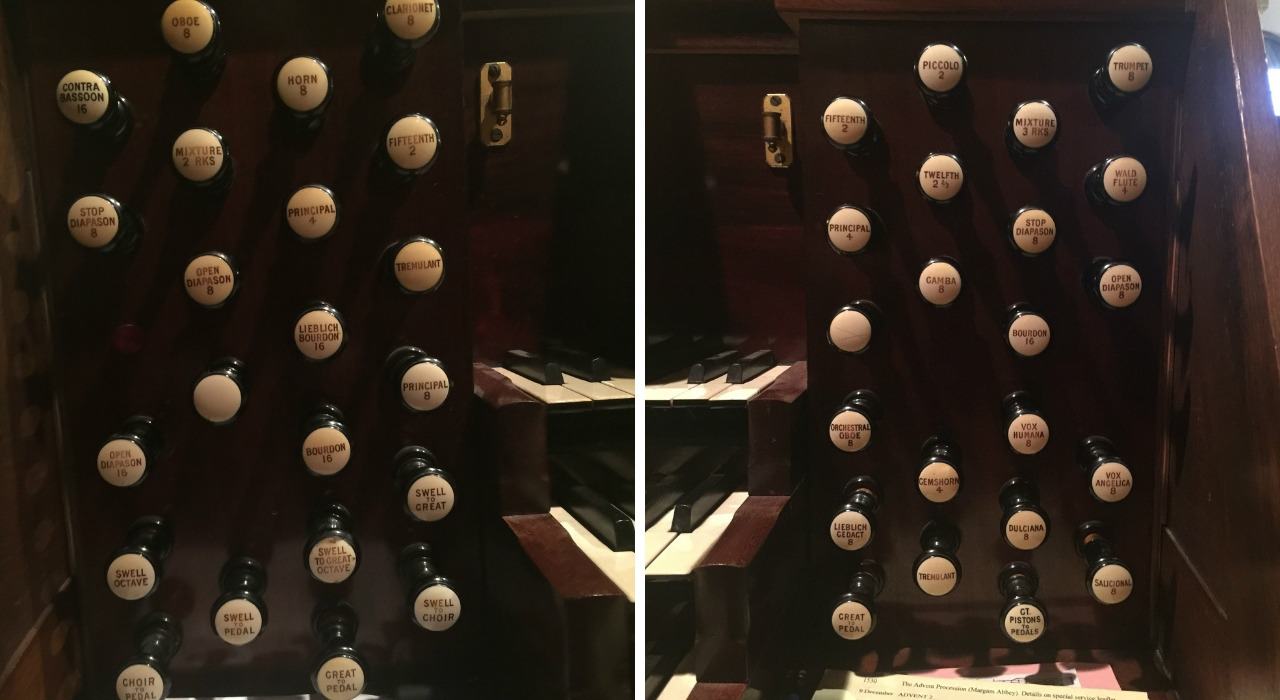
To one side of the case sit a couple of dials that give the impression of a barometer with just 3 coloured markers to give some sort of indication of position. I imagine they indicate air pressure and may well give some advance notice of when it may be too high or low but as they sit behind the organist and out of sight that must be a matter for my continuing speculation.
An alternative suggestion was that they date to the time when the organ was water powered and so perhaps they may have indicated the state of the tides! One or two readers will no doubt have the exact answer so please do leave a comment on this post or send me a message.
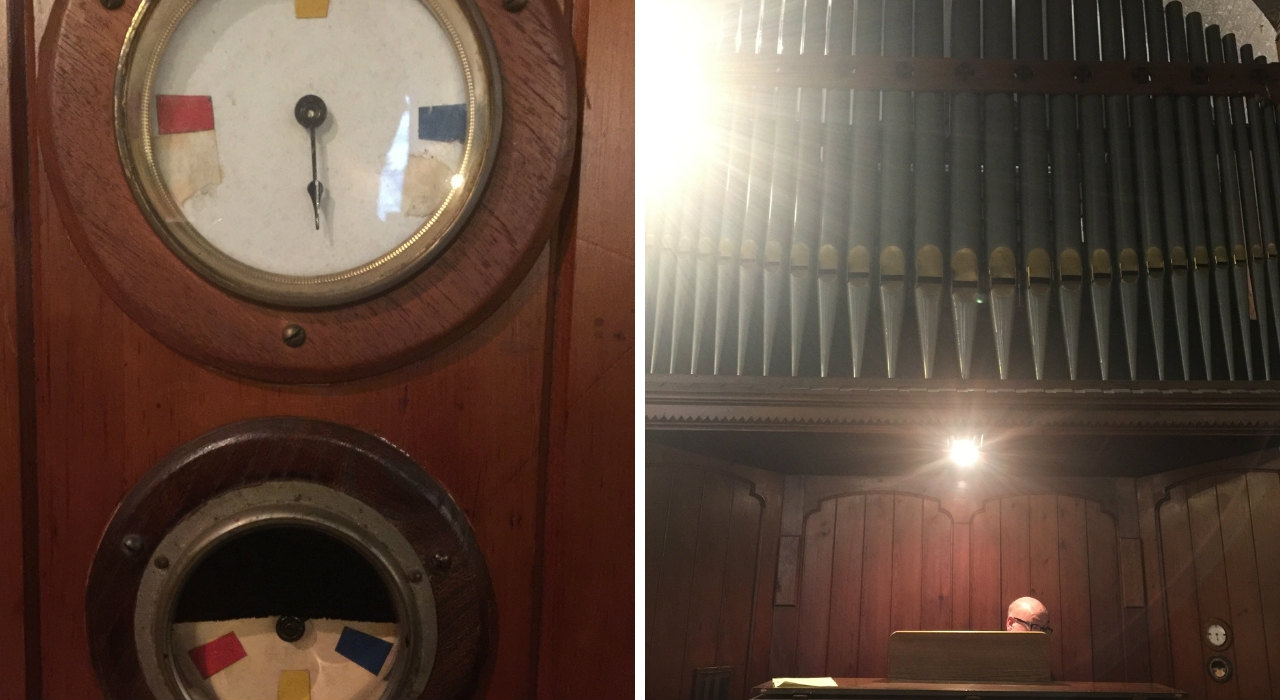
The action is tantalisingly light and pneumatic, as is the stop action. The few ‘combination pistons’ slowly moving the drawstops accompanied by a sound similar to a small steam engine applying its brakes. This was to my mind the least interesting of all the instruments I played, but only because the musician gets no impression at all of the wonderful sound it makes in the church. How all too often does the player get the raw end of the deal! The console cubicle sits directly under the support cornice for the front pipes and this effectively stops near all sound reaching the player.
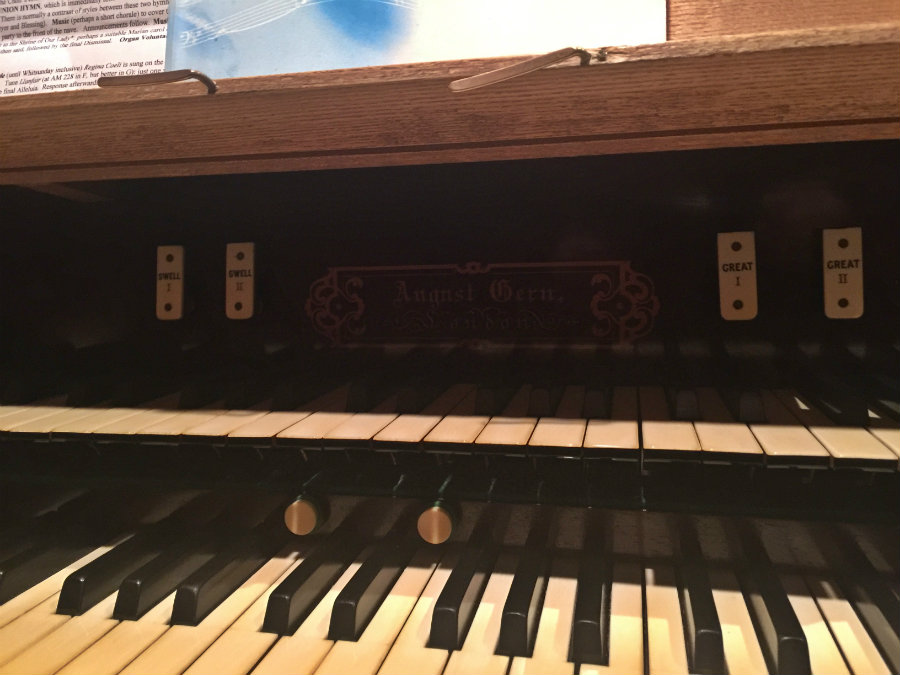
At the time of our visit the entire choir department had been removed for restoration. Even without this you will hear on the recording a fine and rich sound in the nave that I am assured is very typical of Gern instruments. The swell and choir shutters were also of the kick variety and so close together as to be very tricky indeed to operate with ease.
If you did not know Gern had worked with Cavaille-Coll you would almost certainly work this out by looking at his builder’s label which bears a very striking resemblance to the iconic design of Cavaille-Coll’s own inlaid brass plate.
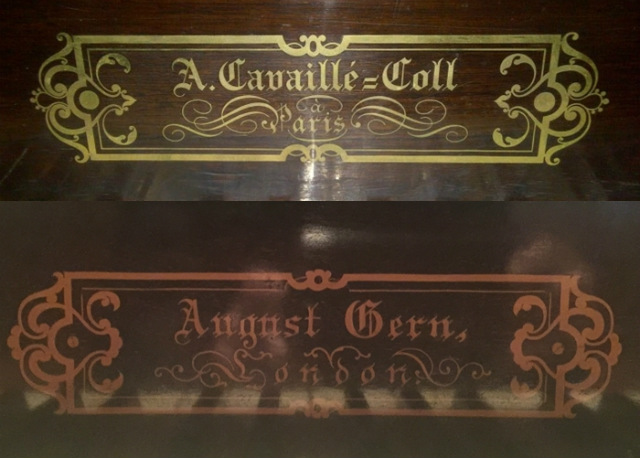
Now finally listen if you want to this instrument on the short recording to be found below. It is a very interesting sound.
Goodbye Wales until we meet again!
And so this trip which involved 6 churches and 2 cathedrals in 36 hours was over. 6 instruments played and 5 recorded. I rather expect that with David’s keen interest and enthusiasm for the special instruments and buildings in which they reside there is another one already coming together before the ink with which this account has been written will have dried. If this is indeed the case you will know where to look for the account to follow.
<< Read Part One of the Welsh Church Organ Pilgrimage
<< Read Part Two of the Welsh Church Organ Pilgrimage
I have had a passion for church organs since the tender age of 12. I own and run Viscount Organs with a close attention to the detail that musicians appreciate; and a clear understanding of the benefits of digital technology and keeping to the traditional and emotional elements of organ playing.
